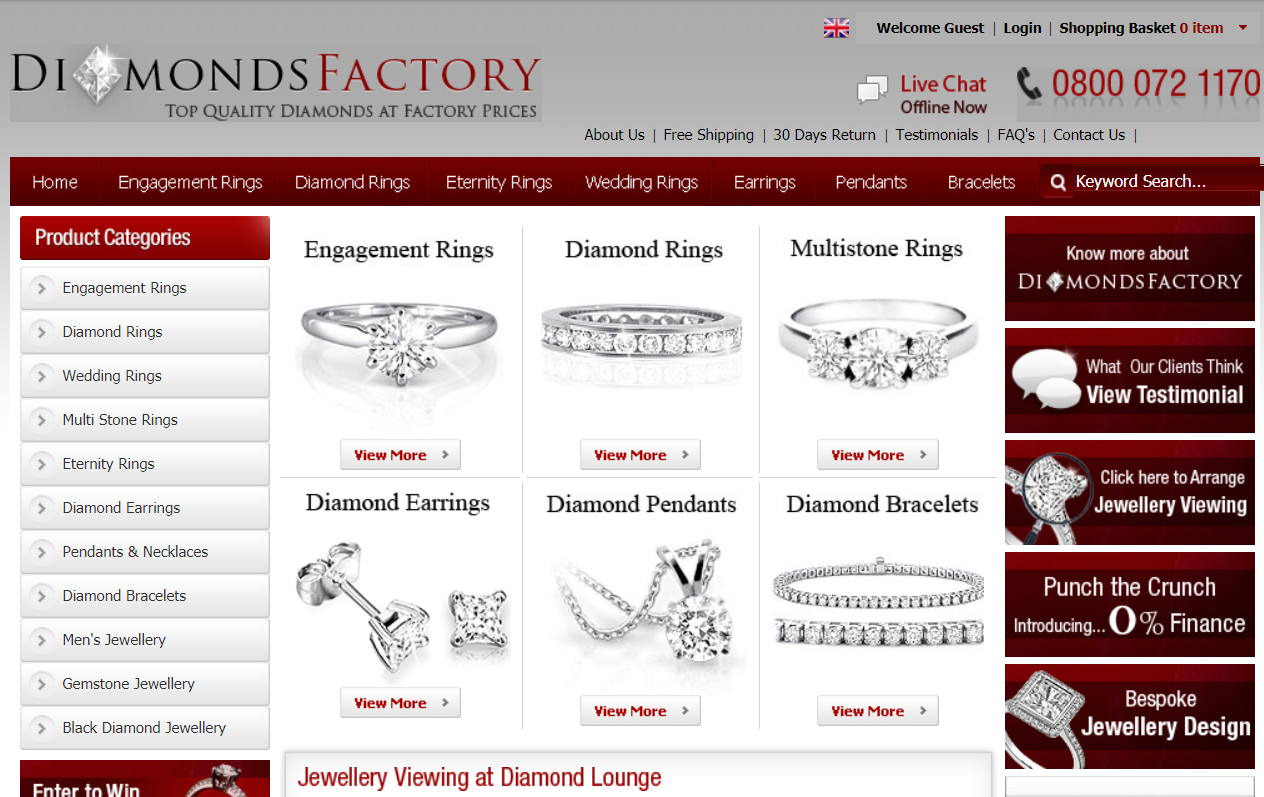Background
Navgrahaa Jewels, an Indian diamond jewellery manufacturer and exporter, observed the dearth of options for UK jewellery shoppers, who had to physically visit Hatton Garden. Capitalising on this opportunity, they launched Diamonds Factory, an online store that offered factory direct prices. Leveraging in-house manufacturing and shortening the traditional supply chain by selling direct-to-consumer, they introduced a compelling ‘lowest price guarantee’ that quickly gained traction in the UK market. In 2012, I was hired to help them grow online sales.
Conversion Rate Optimisation and UX Overhaul
I inherited an ASP.NET website that used Flash for 360-degree product animations and was burdened with cluttered pages and glossy design elements. Initiating a facelift for the website, I adopted an aesthetic flat UI and discontinued obsolete technologies.
Concurrently, I implemented CRO (Conversion Rate Optimization) strategies, incorporating tactical upselling and cross-selling. Simple improvements, like introducing a guest checkout option, slashed cart abandonment from 87% to under 40%, resulting in increased sales with the same inflow of website traffic.
This is how the website looked before and after the revamp.


Another significant project was revamping the product customization journey. Initially, customers followed a unidirectional wizard, starting with diamond selection (carat, cut, colour, clarity), followed by metal (platinum, palladium or choice of gold), and finally selecting the setting design.
I transformed this into an intuitive digital experience, allowing users to begin anywhere – diamond, metal, or setting. They could dynamically customise the product with real-time previews. This innovation led to a spike in customised ring orders, soon constituting over 60% of total online sales. We also dabbled in augmented reality, enabling experiences like trying on pendants virtually, but its adoption remained limited in 2012.
Diversification of Traffic Sources
At the time of my joining, paid search was the biggest source of website traffic and accounted for almost 100% of online sales.They had an SEO agency, but I soon discovered that black-hat tactics were being deployed to create ranking illusions, and meaningful results were absent.
I spearheaded marketing diversification, starting within AdWords (Now Google Ads) by introducing Product Listing Ads (now Google Shopping) in addition to Search Ads. Launching the brand on social media, I initiated product-focused campaigns that generated intent-driven traffic. Sometimes, orders would originate through comments and DMs on platforms like Facebook and Pinterest.
Simultaneously, SEO was transitioned in-house and organic traffic replaced SERP rankings as the primary KPI. While email marketing through sweepstakes proved lacklustre, the introduction of an affiliate program, offering commissions to publishers, proved highly effective. Within six months, AdWords dependency decreased, with nearly 30% of sales originating from new marketing sources.

Expansion to More Countries
With a high-converting website and diversified marketing channels, Diamonds Factory initiated geographic expansion to Ireland and the United States. We further extended to France and Germany, localising customer support and translating website content.
We piloted India under the brand name Style My Diamonds, but demand for customised diamond rings, our USP by now, was low. We also noticed catalogue gaps, particularly bridal jewellery and decided to discontinue India. The other geographies continued to grow and, encouraged by the online sales, Diamonds Factory even opened physical stores in London and Paris.


